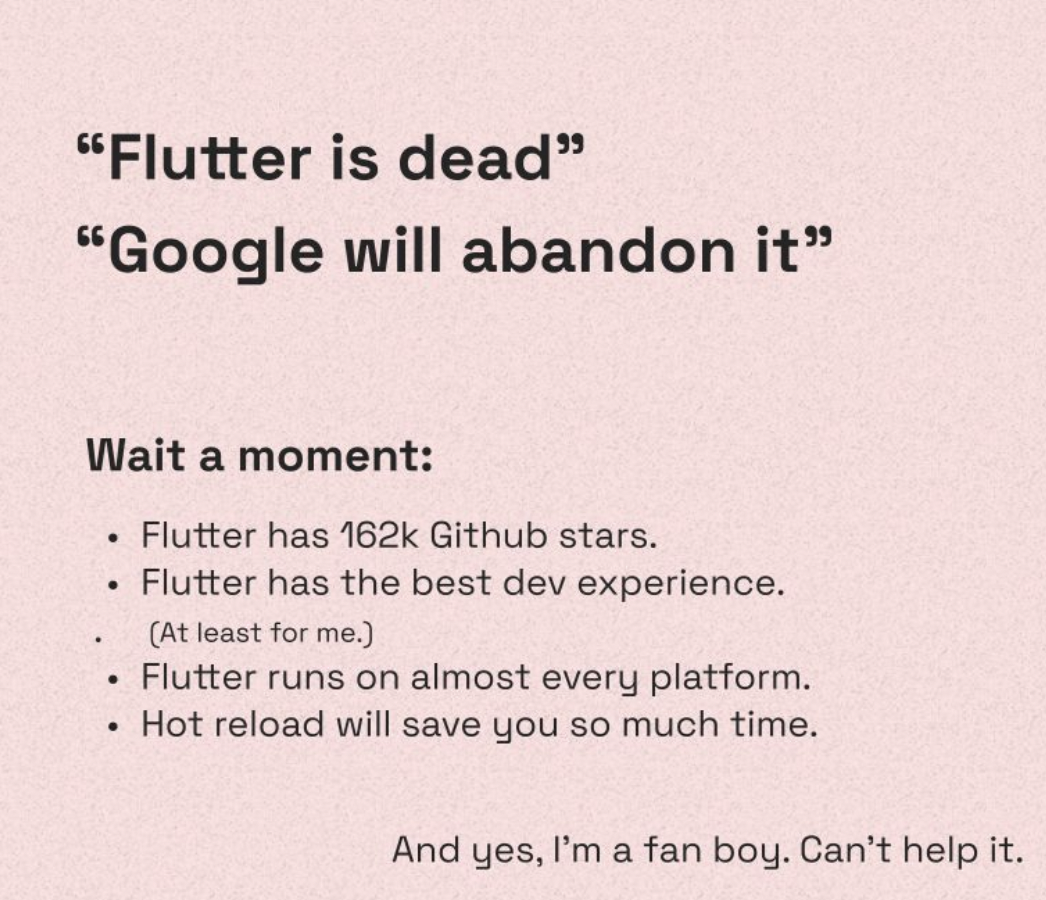
Being successful as a Flutter developer involves mastering a broad set of skills and understanding best practices across both development and design. Here are ten essential things every Flutter developer should know to excel in building mobile applications with Flutter:
1. Dart Programming Language:
- Flutter uses Dart, so a solid understanding of Dart is crucial. Key concepts include async-await, streams, futures, and the overall syntax and language features of Dart.
2. Flutter Widgets:
- Widgets are the core building blocks of a Flutter app. Knowing how to use and customize widgets such as `StatelessWidget`, `StatefulWidget`, and many others in the Flutter widget library is essential.
3. State Management:
- Effective state management is vital in building scalable and maintainable applications. Be familiar with various approaches like Provider, Riverpod, Bloc, Redux, or even simple state management solutions such as `setState` to manage app state efficiently.
4. Understanding the Widget Tree and Rendering Process:
- Understanding how Flutter handles the layout and rendering of widgets can help in optimizing performance and creating complex UIs. This includes the lifecycle of widgets, the concept of context, and the box model for layout.
5. Navigation and Routing:
- Know how to navigate between screens and pass data efficiently. This includes understanding `Navigator`, named routes, and potentially more complex routing packages such as AutoRoute or GoRouter.
6. Animations:
- Flutter provides a powerful suite of animation tools that can help enhance the user experience. Understand the basics of animations in Flutter, including the animation library, tween animations, and using `AnimatedWidget`s and `AnimatedBuilder`.
7. Testing:
- Proficiency in writing test cases for Flutter apps is crucial. This includes unit tests, widget tests, and integration tests to ensure your application is reliable and maintainable.
8. Handling Async Data:
- Knowing how to handle asynchronous operations with APIs, databases, or long-running tasks is crucial. This involves understanding how to use `FutureBuilder`, `StreamBuilder`, and managing async data without causing UI jitters or leaks.
9. Performance Optimization:
- Learn how to use Flutter’s profiling tools, such as the DevTools suite, to find and fix performance issues. Understanding how to efficiently use resources, optimize memory usage, and smooth animations are key.
10. Adaptive and Responsive Design:
- Build apps that look great on a variety of devices and orientations. This includes understanding media queries, flexible layouts (like `Flex`, `Wrap`, `GridView`), and choosing the right approach to adapt your UI to different screen sizes and platform conventions (iOS vs. Android).
